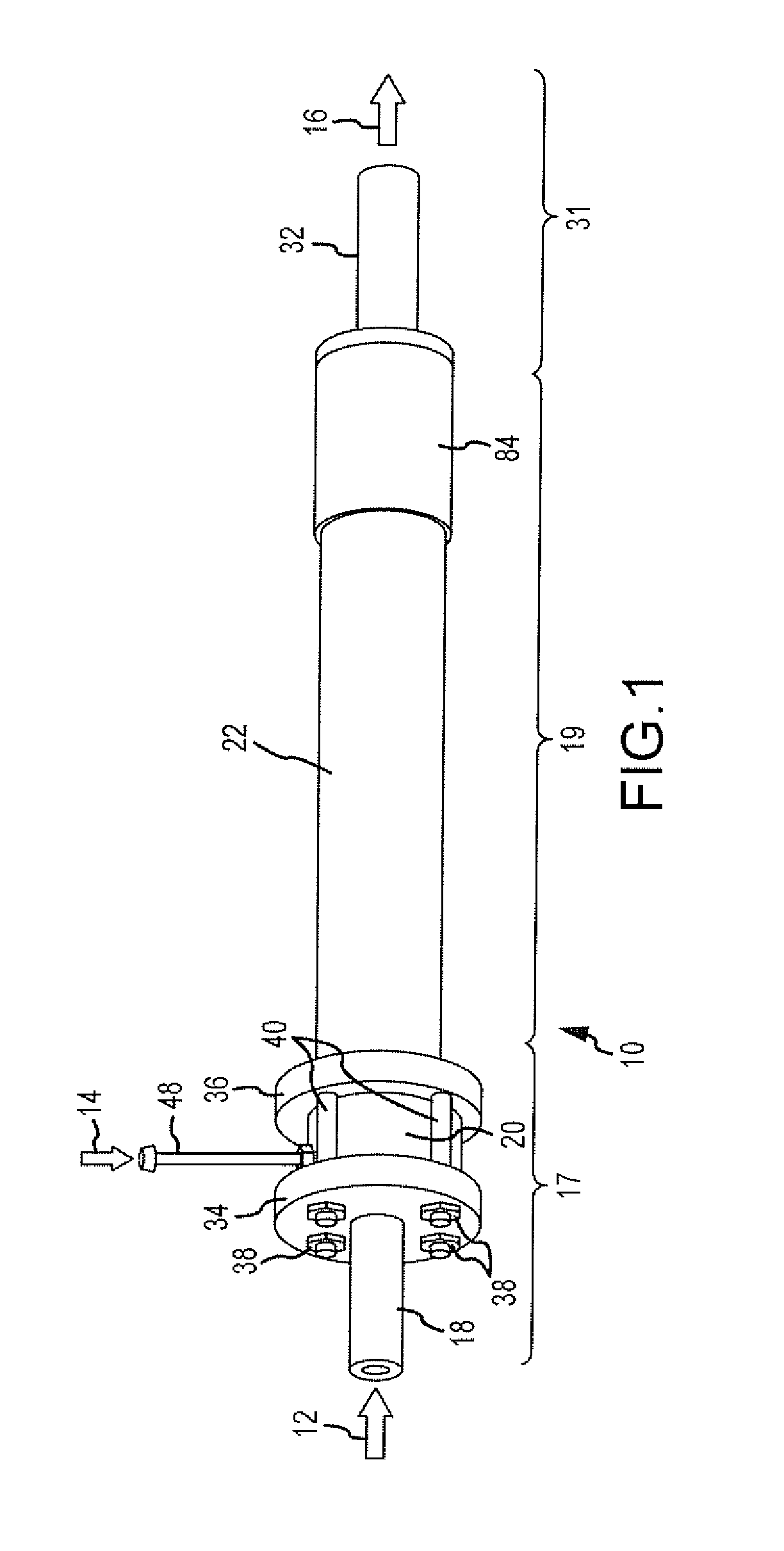Static Fluid Mixer and Method
a technology of mixer and fluid, applied in the direction of mixing, transportation and packaging, chemical instruments and processes, etc., can solve the problems of inability the output mixture may still lack the desired level of homogeneity, and the static mixer lacks the capability to completely subdivide the added input fluid, etc., to achieve effective mixing, reduce the amount of energy, and reduce the effect of pressure drop
- Summary
- Abstract
- Description
- Claims
- Application Information
AI Technical Summary
Benefits of technology
Problems solved by technology
Method used
Image
Examples
Embodiment Construction
[0037]A static mixer 10 which embodies the present invention is shown in FIGS. 1 and 2. The static mixer 10 mixes an input carrier fluid 12 with a relatively smaller amount of an added input fluid 14 to achieve an output fluid mixture 16 which is a substantially homogeneous dispersal of very finely subdivided volumetric quantities (powder grains, drops or bubbles) of the added input fluid 14 dispersed throughout the carrier fluid 12. The static mixer 10 is a continuous flow type mixer in which the carrier fluid 12 and the added input fluid 14 are continuously supplied to static mixer 10 to create the output fluid mixture 16. Typically, the carrier fluid 12 will have a much higher volumetric flow rate than the added input fluid 14, although the static mixer 10 will also accommodate comparable volumetric flows of the carrier fluid 12 and the added input fluid 14. The carrier fluid 12 and the added input fluid 14 are pressurized by pumps (not shown) before delivery into the static mixe...
PUM
| Property | Measurement | Unit |
|---|---|---|
| Pressure | aaaaa | aaaaa |
| Angle | aaaaa | aaaaa |
| Flow rate | aaaaa | aaaaa |
Abstract
Description
Claims
Application Information
 Login to View More
Login to View More - R&D
- Intellectual Property
- Life Sciences
- Materials
- Tech Scout
- Unparalleled Data Quality
- Higher Quality Content
- 60% Fewer Hallucinations
Browse by: Latest US Patents, China's latest patents, Technical Efficacy Thesaurus, Application Domain, Technology Topic, Popular Technical Reports.
© 2025 PatSnap. All rights reserved.Legal|Privacy policy|Modern Slavery Act Transparency Statement|Sitemap|About US| Contact US: help@patsnap.com



